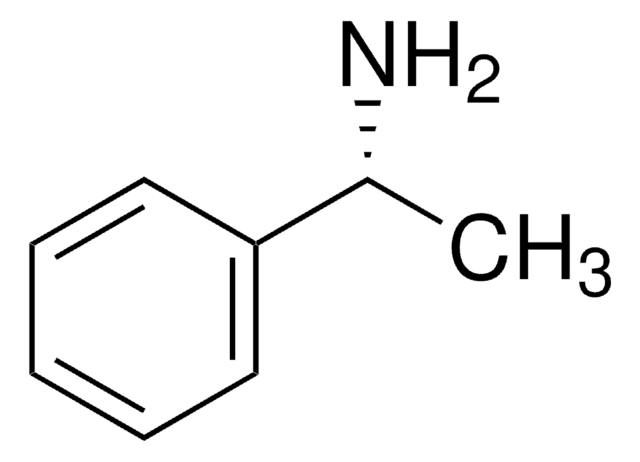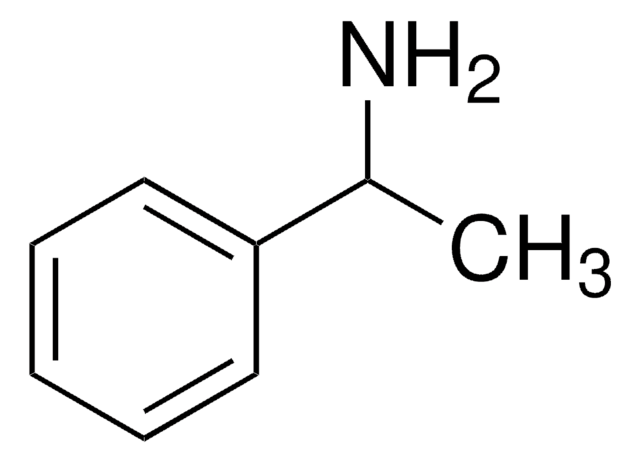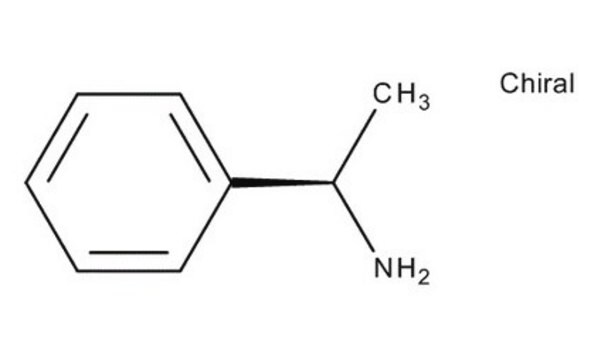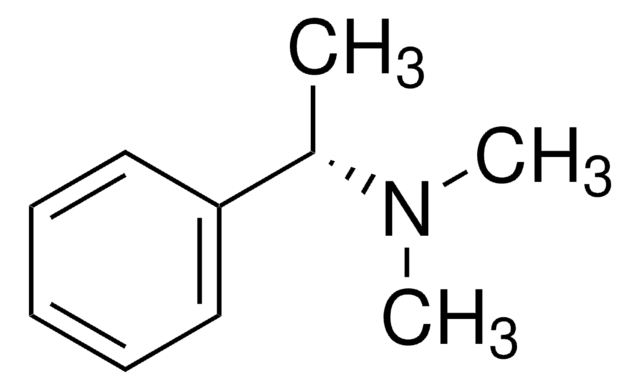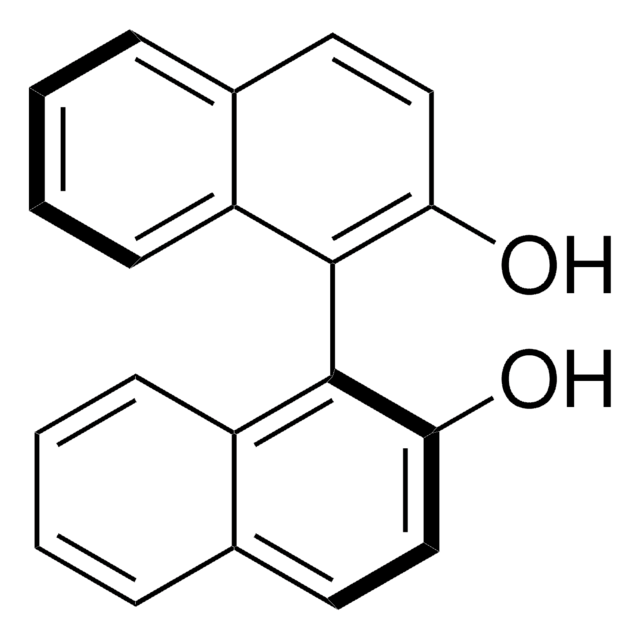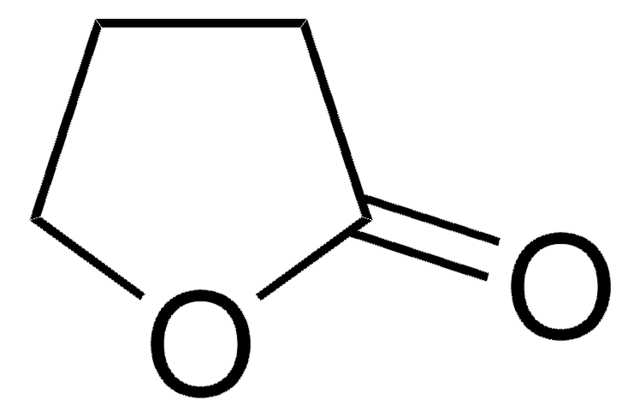452823
(+)-Bis[(R)-1-phenylethyl]amine
99%
Synonym(s):
(+)-Bis[(R)-α-methylbenzyl]amine, [R-(R*,R*)]-(+)-Bis(α-methylbenzyl)amine
About This Item
Recommended Products
Quality Level
Assay
99%
optical activity
[α]20/D +199.0°, neat
optical purity
ee: ≥99% (GLC)
refractive index
n20/D 1.5523 (lit.)
bp
86 °C/0.05 mmHg (lit.)
density
0.985 g/mL at 25 °C (lit.)
functional group
amine
phenyl
SMILES string
C[C@@H](N[C@H](C)c1ccccc1)c2ccccc2
InChI
1S/C16H19N/c1-13(15-9-5-3-6-10-15)17-14(2)16-11-7-4-8-12-16/h3-14,17H,1-2H3/t13-,14-/m1/s1
InChI key
NXLACVVNHYIYJN-ZIAGYGMSSA-N
Application
- In the synthesis of β-amino acids.
- In the preparation of chiral C(19)-C(26) and C(27)-C(32) moieties of scytophycin C.
- To induce enantioselectivity in the deprotonation of prochiral ketones.
- As a starting material for the synthesis of chiral phenolate ligands through Mannich condensation reaction.
- In the synthesis of chiral phosphoramidite ligands.
- To prepare chiral cyclic isoimidium salts, which are further used to synthesize chiral lactones through Diels-Alder reaction.
Signal Word
Warning
Hazard Statements
Precautionary Statements
Hazard Classifications
Eye Irrit. 2 - Skin Irrit. 2 - STOT SE 3
Target Organs
Respiratory system
Storage Class Code
10 - Combustible liquids
WGK
WGK 3
Flash Point(F)
>235.4 °F - closed cup
Flash Point(C)
> 113 °C - closed cup
Personal Protective Equipment
Choose from one of the most recent versions:
Already Own This Product?
Find documentation for the products that you have recently purchased in the Document Library.
Our team of scientists has experience in all areas of research including Life Science, Material Science, Chemical Synthesis, Chromatography, Analytical and many others.
Contact Technical Service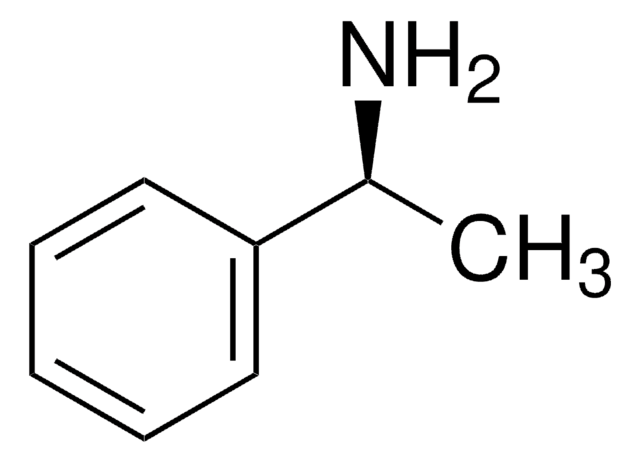
![(−)-Bis[(S)-1-phenylethyl]amine 99%](/deepweb/assets/sigmaaldrich/product/structures/336/455/d6f04f0e-9bcc-4d67-a94d-d153e39209e1/640/d6f04f0e-9bcc-4d67-a94d-d153e39209e1.png)
